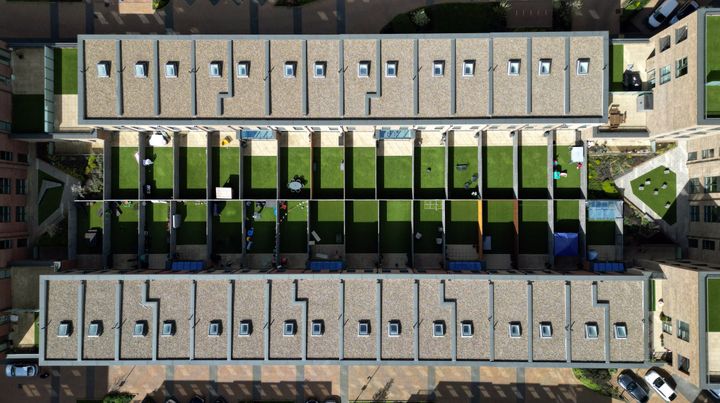
For a nation of people who really seem to enjoy nature, it doesn’t seem like most Brits are getting anything like enough of it. Research from house-builders Redrow found that roughly “One in four (Brits) haven’t seen worms (27%), a butterfly (26%) or snails (24%) in the last month.”
In a way, it makes sense. “9.7 million people were estimated to live in rural areas in England in 2020, compared with 46.9 million people in urban areas,” Government figures from March 2023 show.
It can be hard to find the space to grow a gorgeous green garden in a bustling city – and even if you have a bit of room, new build gardens can feel impossible to sow and grow in.
The shallow, compacted soil can seem hard to work with, and identical fences and smooth, flat lawns can make newer lawns look a little same-y (as well as discouraging all-important biodiversity).
HuffPost spoke to gardening expert Arthur Parkinson about the best plants to grow avoid the “cardboard box” look of new-build gardens. Here’s what he had to say:
Climbers are the secret to making new gardens look established
When most of us think about growing a flourishing garden, our minds automatically go to the ground. But Parkinson shared that when it comes to new builds, it’s important to think vertically, too.
“Just going back to what a new build garden normally is, you’re overshadowed by other housing. And also the worst thing is just that typical cardboard box feeling of fence panels,” the gardening pro told HuffPost.
“So what one thing I would say to anyone when they’re thinking about what the first plants to plant? Always think about dressing the fences, because that’s almost like putting wallpaper around your garden.”
“Things like honeysuckle and climbing hydrangea, things that are very fast to grow” are a great idea for newer backyards, Parkinson stated. “It’s all about making the garden feel established in a shorter time frame as possible,” he said.
Not sure which plant in particular to go with? Parkinson especially recommends sweet-smelling honeysuckle.
“Honeysuckle is one of the best plants for pollinators – moths can smell it from miles away at nighttime,” he said. “It’s very fragrant, so it’s lovely for us as well. And it then gives a berry in the autumn for birds.”
Whatever you do, though, Parkinson recommends you don’t neglect your fences. ”If you don’t dress the fences, no matter what you do, it will always look like a fairly new garden because those fence panels are just there, very bare-looking, like they need to be dressed,” he warns.
The Royal Horticultural Society (RHS) says that honeysuckle is surprisingly easy to grow, provided it has space, additional support from twine, lattices, or trellises, and ideally some dappled shade.
“Climbing honeysuckles can be bought and planted all year round. You’ll get the best results, however, if you plant deciduous ones in winter and evergreens in spring or autumn,” the RHS adds.
Don’t mind me, just off to the garden centre...